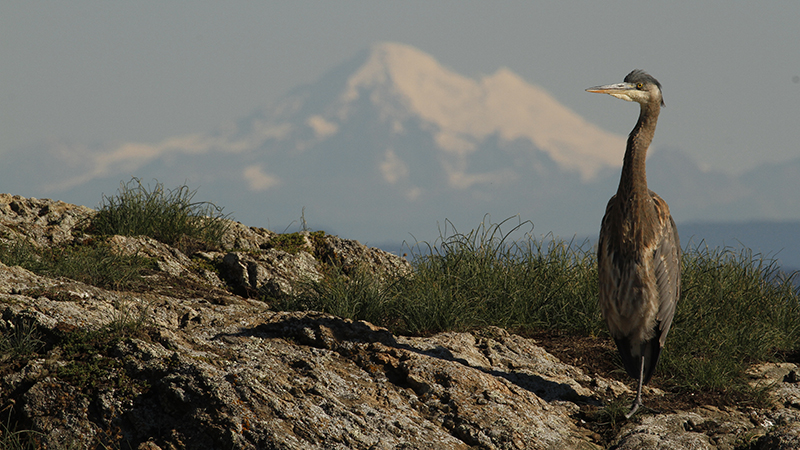
Want to get your 10,000 steps in and learn about avian species like the cackling goose or the pterodactyl-like blue heron?
British Columbia has recently created the BC Bird Trail, a series of self-guided trails for dedicated birders and newbies looking to discover our feathered friends in BC’s skies year-round.
“It started with a meeting with Birds Canada, after we had developed the Richmond bird map,” says Ceri Chong of Tourism Richmond. “We saw the potential to create something for birds like the BC Ale Trail has done for beer.” Richmond is a destination well known among the birdwatching community, and Chong and her colleagues realized it was worthwhile encouraging more bird-lovers to explore its pathways, especially since BC lies beneath the Pacific Flyway, the major north-south route of migratory birds on the west coast of the Americas.
Look for varieties of chickadees in the bushes, mallards on the ponds or, if you’re lucky, a bald eagle overhead.
Destination BC and various partners and regional tourism boards, including Indigenous Tourism BC, worked together to inaugurate three trails in October 2020: Richmond Delta, Fraser Valley and Central Vancouver Island. Each trail section includes suggestions for a day trip or multiday itinerary, details on worthy places for a coffee or to buy supplies, and locally owned B&Bs and dining options.
The BC Bird Trail also takes advantage of existing trails, like the Little River extended loop, a 4.6-kilometre jaunt in Langley’s Campbell Valley Regional Park. A combination of field, forest and marsh, the wide pathways make it easy to look for varieties of chickadees in the bushes, mallards on the ponds or, if you’re lucky, a bald eagle overhead.
With plans in place to develop more trails, the BC Bird Trail aims to encourage locals to get outside and gain bragging rights, spotting bald eagles, snow geese, harlequin ducks, common loons, northern flickers and red-breasted nuthatches, to name a few.


